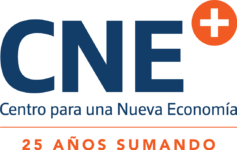Puerto Rico in the 2019 Disaster Supplemental
Published on May 31, 2019
Supplemental Bills in Congress
Every year Congress has to determine the size of the federal budget. In general, federal spending is divided in two categories: mandatory and discretionary spending. Mandatory spending refers to funds the government is required to spend automatically for certain purposes pursuant to laws previously enacted by Congress. This type of spending includes payments for entitlements, such as Medicare and Social Security, federal pensions, and interest payments on the federal debt. Discretionary spending, on the other hand, includes everything else and is subject to the annual appropriations process. Aside from the ordinary appropriations process, unexpected emergencies such as natural disasters or times of war require Congress to extend additional, supplemental appropriations.
After many deliberations between key negotiators, on Thursday, May 23, 2019, and just hours before recessing for the Memorial Day holiday, the Senate passed a long-awaited $19.1 billion bipartisan disaster aid package. The House intended to pass the bill the next day in a pro-forma session through a unanimous consent voice vote at the last hour, but failed to do so given objections by Representative Chip Roy (R-TX). Days later, Rep. Thomas Massie (R-KY) also objected to a new request to pass the measure by unanimous consent. Just yesterday, Rep. John Rose (R-TN) also objected, shifting any future possibility of House passage until Monday, June 3, when the House is able to take a roll call vote. There has been much fanfare about the provisions included for Puerto Rico in the multi-billion dollar supplemental. However, a closer look at the legislative language begs caution on the celebratory tone. The text foreshadows more bottlenecks along the way.
Of the $2.431 billion authorized in additional CDBG funds, $431 million were set aside for grantees of 2017 disasters, and $331 of those for victims of Hurricane Maria. However, legislators included language that restricts the drawdown of CDBG-DR funds until recipients engaged in section 428 alternative procedures of the Stafford Act reach agreement with FEMA on all cost estimates for large scale public assistance projects. You may recall Puerto Rico requested these alternative procedures given the flexibility they afforded in the use of funds, however, the GAO has subsequently reported the 428 process does not eliminate challenges associated with funding delays. The new language, therefore, links the disbursement of CDBG-DR funds with reaching agreement with FEMA on costs estimates for large scale public assistance projects, possibly generating further delays in the disbursement of CDBG funds. The legislative language states:
“That any amounts allocated pursuant to the previous two provisos to any such grantee shall not be available for draw down and expenditure by a grantee that has entered into alternative procedures under section 428 of the Stafford Act as of the date of enactment of this Act until such grantee has reached a final agreement on all fixed cost estimates within the timeline provided by the Federal Emergency Management Agency”
Lawmakers also imposed additional restrictions in the draft language – perhaps as a nod to the White House – that delivers on HUD Secretary Ben Carson’s prior comments on adding additional financial controls to funds directed to Puerto Rico. The language specifically states:
“the Secretary must receive from the grantee information that allows the Secretary to certify that such grantee has in place proficient financial controls and procurement processes and has established adequate procedures to prevent any duplication of benefits…to ensure timely expenditure of funds, to maintain comprehensive websites regarding all disaster recovery activities assisted with these funds, and to detect and prevent waste, fraud, and abuse of funds”.
The Senate version failed to include language to appropriate $45 million needed for the Caño Martín Peña. In contrast, the House version, H.R. 2157, included language for this purpose: “$45,000,000 shall be used to initiate, at full Federal expense, construction of authorized Corps of Engineers ecosystem restoration projects that have incidental flood risk management benefits in areas impacted by Hurricanes Irma and María”.
In addition, since the early start of this year, the government of Puerto Rico has been requesting clarifying language on the use of federal disaster funding for permanent works. They claimed FEMA’s interpretation of Section 20601 of the Balanced Budget Act of 2018 was limiting their ability to rebuild to industry standards, without regard to pre-disaster conditions. In this latest text, there is no language that addresses those concerns.
There is one clear win for Puerto Rico in the Senate version since it includes $600 million to supplement disaster nutrition assistance and $5 million for an independent study assessing the impact of such additional benefits. However, this is a far cry from Puerto Rico’s current needs, and a minimal share of the broader package.
What happens now?
For a bill to become law, the House and Senate must agree to the same legislative text. Put differently, at some point in the legislative process, lawmakers in both chambers must agree to language that garners enough votes before sending a bill to the President and made into law. Traditionally the House initiates appropriation bills and, after debating over its language, sends an approved package to the Senate for its consideration. This is typically done in the form of an amendment in the nature of a substitute, (or an ANS amendment as they are known in DC political circles). The Senate basically substitutes the entire bill as an amendment. That is to say, in the case of this latest disaster supplemental, the House will probably pass the bill as is, without additional amendments.

